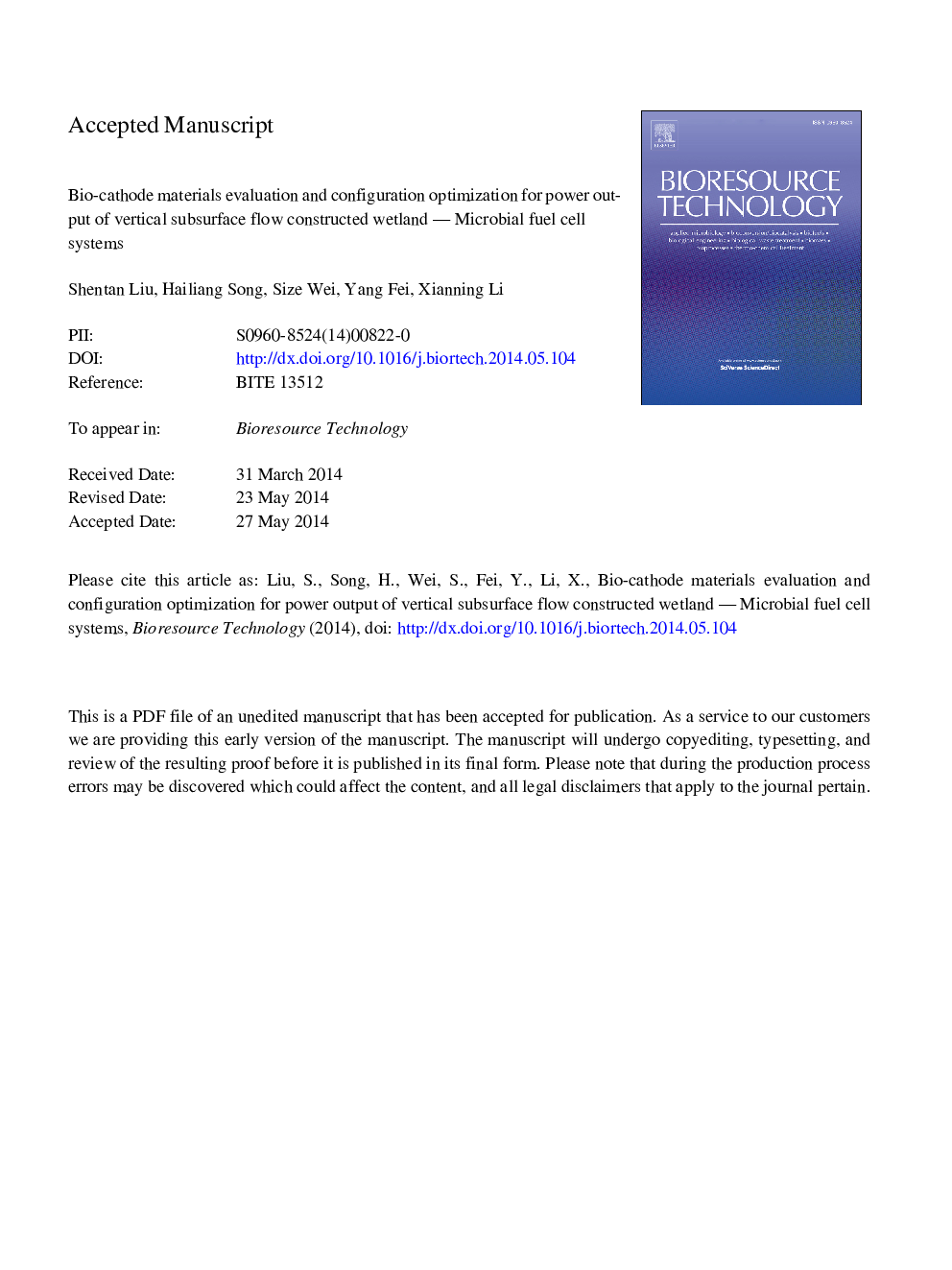| Article ID | Journal | Published Year | Pages | File Type |
|---|---|---|---|---|
| 7076939 | Bioresource Technology | 2014 | 37 Pages |
Abstract
To optimize the performance of a vertical subsurface flow constructed wetland-microbial fuel cell (CW-MFC), studies of bio-cathode materials and reactor configurations were carried out. Three commonly used bio-cathode materials including stainless steel mesh (SSM), carbon cloth (CC) and granular activated carbon (GAC) were compared and evaluated. GAC-SSM bio-cathode achieved the highest maximum power density of 55.05Â mWÂ mâ2, and it was most suitable for CW-MFCs application because of its large surface area and helpful capillary water absorption. Two types of CW-MFCs with roots were constructed, one was placed in the anode and the other was placed in the cathode. Both planted CW-MFCs obtained higher power output than non-planted CW-MFC. Periodic voltage fluctuations of planted CW-MFCs were caused by light/dark cycles, and the influent substrate concentration significantly affected the amplitude of oscillation. The coulombic efficiencies of CW-MFCs decreased greatly with the increase of the influent substrate concentration.
Related Topics
Physical Sciences and Engineering
Chemical Engineering
Process Chemistry and Technology
Authors
Shentan Liu, Hailiang Song, Size Wei, Fei Yang, Xianning Li,
